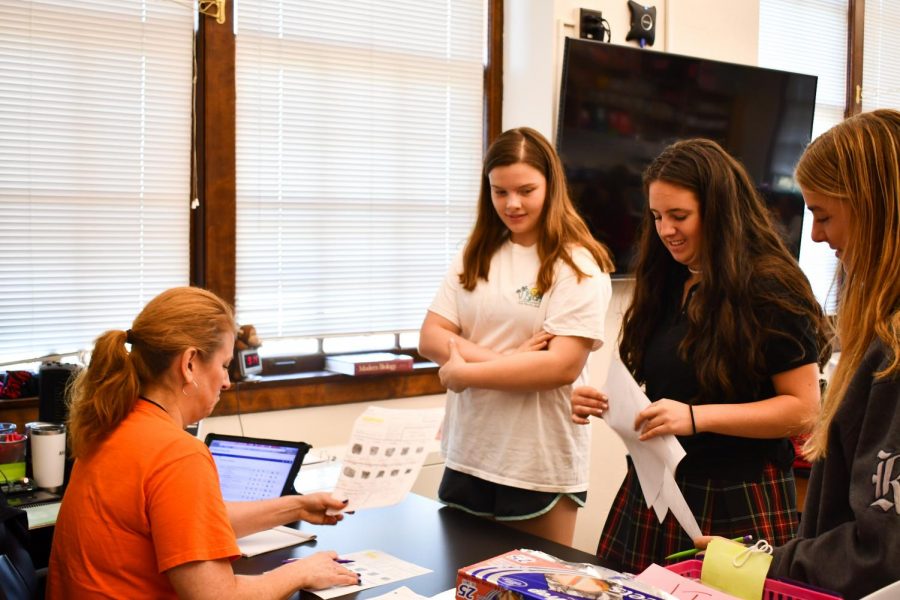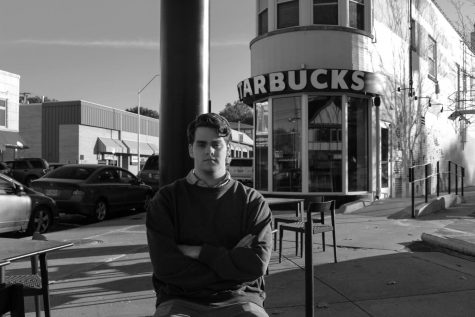College length classes do not define “college prep”
Although there are many benefits to blocked classes, they are not worth the negative changes they would impose on STA.
Sophomores Maddison Faul and Kathyrn Hart receive help from Mrs. Blake Sept. 24. In a flipped classroom, students do most of the lecture-based work outside of class and then ask questions during the school day. photo by Lily Sage
October 24, 2019
If one phrase can be used to describe the curriculum, culture and environment of STA, it is “college prep.” From built-in free periods to involved college counseling, no one can say that this school isn’t doing its best to get us ready for higher education.
Many other college preparatory schools have moved toward block scheduling, including the Pembroke Hill School, Lincoln College Preparatory Academy and Bishop Miege High School. This means that students have longer and fewer classes each day. In contrast, STA has 40-minute classes and eight periods a day.
Some would argue that the way our schedules are set up under-prepares us for the reality of college classes, which require long attention spans and more irregular class meetings. But for STA, block scheduling is not the solution. However beneficial it may be for other college prep schools, it would do more harm than good for us.
For one, in order to fit the typical four 1.5-hour classes into a day, free periods would likely have to be altered or removed altogether from our schedules. These are hugely helpful in managing the demanding workload STA students often have and for developing the time management skills needed for college and beyond. The advantages of built-in unstructured time far outweigh the benefits of block scheduling in terms of college preparation.
There are certain courses at STA that already have one “block” period per week such as lab-based science classes, certain art classes and yoga. These classes lend themselves well to a longer class period but many others do not. Lecture-based courses do not require the extended time that lab and art classes do, and implementing a block schedule would only make it harder for students to retain the information. If schedules were adapted to make every class blocked, teaching styles would need to adapt with them.
The schedule of an STA student does not need to exactly match that of a college campus in order for that student to be fully prepared for higher education. Fifth graders have different schedules than high school students because they cannot focus for as long as we can. The same can be said of high school vs college learning abilities. Teenage minds are constantly growing and improving — attention spans grow with them. A block schedule is not necessary in directing students and teachers toward a successful college-prep environment.









